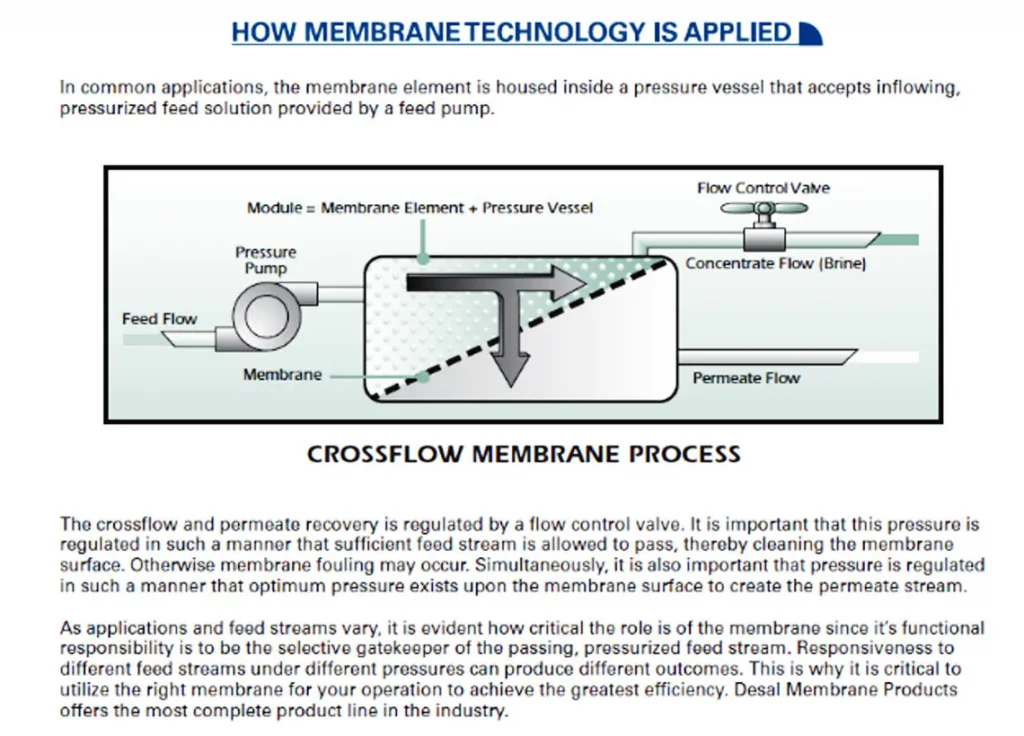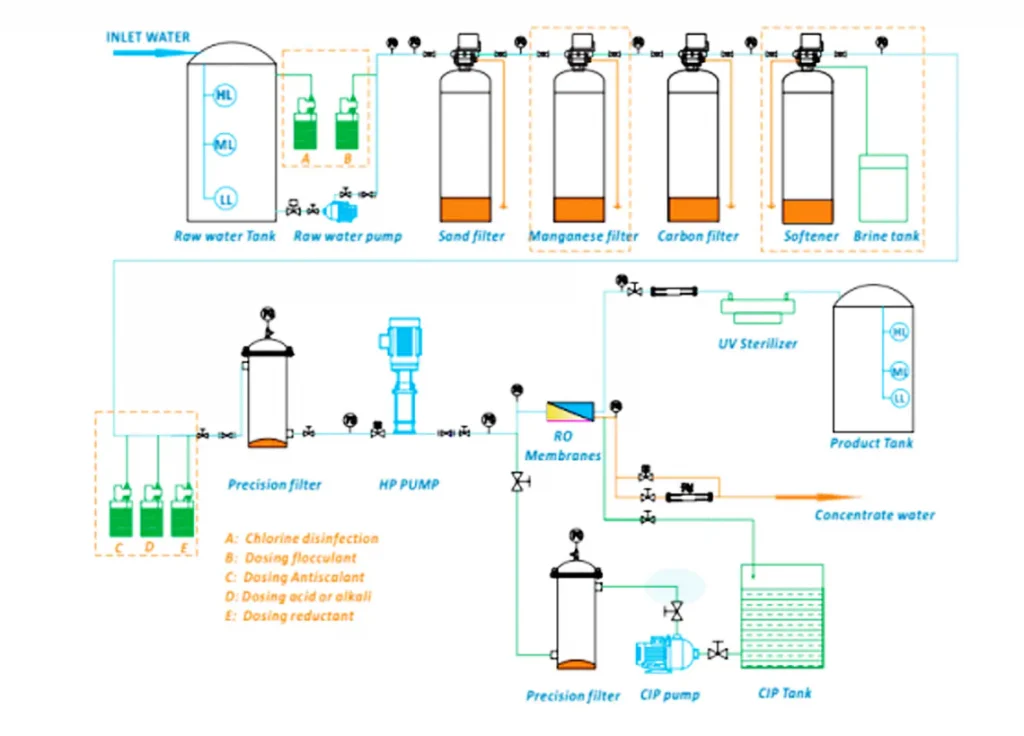Our videos
WHAT IS REVERSE OSMOSIS (RO)?
Reverse osmosis is a popular topic in the water treatment industry. With the lowest energy requirements, some of the highest recovery rates, and one of the best rejection rates on the market(the desalination up to 96%-99%, that is why people are interested in learning more about it. How does it work for reverse osmosis and what is the definition for it?
Ocpurtiech will let you have a clear understanding about reverse osmosis.
Reverse Osmosis(RO) is a process that uses semi-permeable spiral wound membranes(like our skin, or the inside of a plant cell) to equalize the concentration of particles dissolved in the water.
The RO membranes allow the water pass through, and separate and remove solid, organic, progeny, sub micron colloidal matter, color nitrate and bacteria from water.
Feed water is delivered under pressure through the semi permeable membrane, where water permeates the micropores of the membrane and is delivered as purified water called permeate water. Impurities in the water are concentrated in the reject stream and flushed to the drain is called concentrate water.
How does an RO System work?


(1) Raw Water Tank
Using large tank that stores the contaminated water is very important.If there is not enough feed water, then the pump will be damaged. so having a large storage tank for your intake water is an easy way to make sure your pump lasts for as long as possible.
(2) Raw Water Pump
A commercial or industrial pump provides the initial pressure for the Treatment System. This motor usually provides enough water pressure to get through any pretreatment as well as the RO membranes. Ocpuritech will choose high-quality stainless steel 304/316 pump for long life usage.
(3) Sand Filter
Using quartz sand and gravel to remove all physical impurites larger than 10 micron by FRP or SUS tank with multi-port valve.
(4) Carbon Filter
Using coconut-shell activated carbon to remove chlorine, odor and taste by a FRP or SUS tank with multi port valves.
(5) Softener Filter
Using cation resin to remove salts of calcium iron, magnesium that may be from scale encrustations by a FRP or SUS tank with a multi-port valves.
(6) Precision Filter
1 or 5 micron PP filter cartridge to remove sediments and protect the membranes.
(7) HP Pump
High-quality stainless steel 304/316 pump pressurize RO system.
(8) Reverse Osmosis (RO)Membranes
Separating and removing dissolved solids, organic, pyrogens sub-micron colloidal matter, color,nitrate and bacterial from water
(9) Water UV Sterilizer
The UV sterilizer is placed before the storage tank, and as a final disinfection device. Most of the time, we either use post chlorination as a disinfectant agent, or ultraviolet sterilization.
(10) purified Water Storage Tank
The permeate from the RO purification system will usually go to a large tank, where the water is stored for use. If there is not the tank, the system needs to be operated in order to have access to the fresh water. which can be inconvenient.

